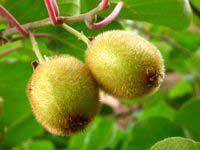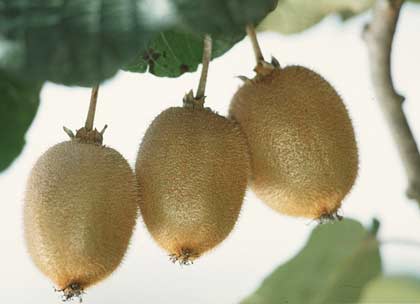The monkey peach has recently gained popularity; it is a wild climbing plant resembling a pear in shape and peach in color, which is highly favored by Macaca monkeys, hence the name “monkey peach.” This fruit has been cultivated in China for over 1,000 years.
 |
|
(Photo: Wikimedia) |
New Zealand has also imported it since 1906, and since the fruit resembles the Kiwi bird—an emblem of their country—it is also referred to as “kiwi fruit.” Currently, New Zealand dominates the international market for monkey peaches.
The monkey peach is a climbing, deciduous plant with a wide distribution, high yield, and large, delicious fruit. Its climbing stem resembles that of grapes, producing male and female flowers on different plants. In summer, it blooms with a fragrant flower that is pollinated by insects, with nectar-producing glands developing. The flowers bloom for 4-6 months, providing an ideal nectar source for bees. The fruit is egg-shaped or cylindrical, ripening in September to October, with each fruit weighing about 50 grams, and the largest weighing up to 170 grams. The flesh is yellow-white or green, containing about 500-1,200 seeds that resemble dark brown sesame seeds. It can be propagated from seeds.
The monkey peach contains 8-14% acid, 12-18% soluble matter, and many amino acids. In 100 grams of fresh fruit, it contains 150-420 mg of Vitamin C, which is ten times that of citrus fruits. The fresh fruit has a pleasantly tangy flavor.
Recently, it has been discovered that the monkey peach contains numerous bioactive compounds with potential anti-cancer properties, making it a subject of great interest among cancer specialists.

(Photo: Forestry Images)


















































